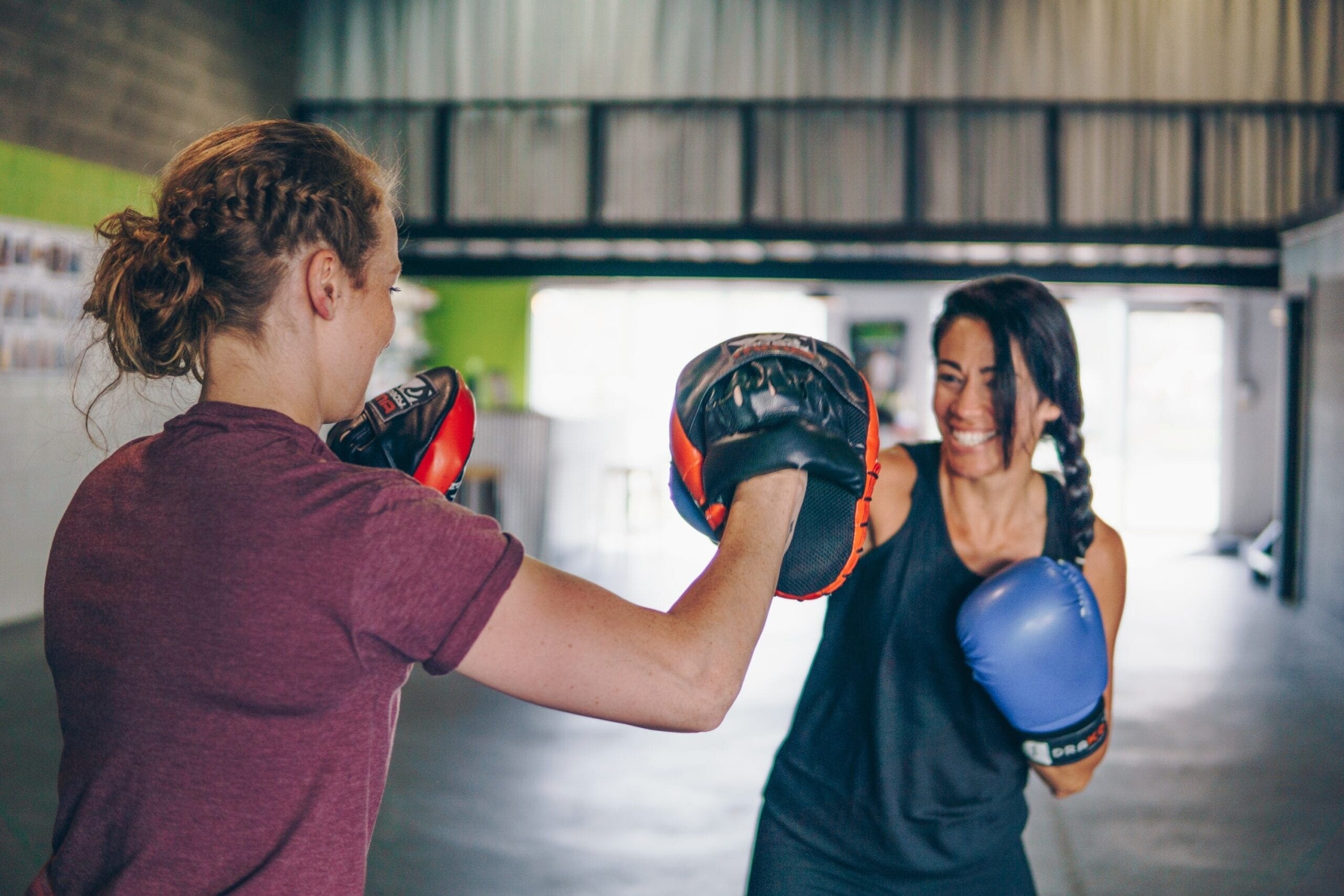
Just as there are natural talents within us, there are also techniques to excel in any area, be it at work or in sports. Learning winning boxing techniques is no exception to the rule. Certain men and women have better natural timing, balance, or strength to help them initially. Still, winning requires many repetitious moves, strength and agility training, practice, and stamina.
Boxing Techniques – The Stance
One of the first boxing techniques to master before the first punch is ever thrown is having the right and proper stance. In the appropriate stance technique, the player is positioned with the legs shoulder-width apart to have a fully erect and powerful stance. The feet are tipped just inward with the right heel slightly off the ground to help with balance.
Photo by Thao Le HoangThe lead (generally the left) fist is place perpendicular to the floor about six inches in front of the face at approximate eye level. The rear fist is placed close to the chin to protect the face and the elbow back against the ribcage to protect the body. The chin must be tucked in the chest to evade punches to the jaw, causing a knockout when uppercuts are used.
The sport of boxing is all about balance, movement, throwing punches to the opponent, and evading their punches. The proper stance helps the boxer to have the appropriate balance from the beginning.
Once the stance and general balanced movements are mastered, the boxing punch combinations are added. Although the punch combinations themselves are learned by all boxers and evasive maneuvers to avoid them, using different unexpected combinations quickly and expertly executed while blocking the opponent’s punches leads to a winning performance.
Typically, the punches are jabs that are short movements to the face to catch the opponent off guard and help position them for the next punch. Many openings are a jab followed by a right cross. Though anticipated as an opening, if body movements can fool the opponent, the boxer can still open with a 1-2 and be successful.
Photo by Thao Le HoangSometimes they will attempt to confuse the opponent by throwing several jabs before delivering the follow-up punch. Usually, suppose a 1-2 start is executed. In that case, the shift in weight makes the most natural next move a left hook, again this is taught and taught with evasive maneuvers. Hence, the speed from the very first bell is imperative.
Keeping one’s chin down is a way to avoid knockout type hits to the face. By using an uppercut to pop the head up unprotected for a cross or a hook, winning boxing is like chess in the blending of learned techniques to outwit the opponent.
Simple Boxing Combinations
Photo by Hermes RiveraIf you are just learning to box, you will want to learn some simple boxing combinations. Boxing requires you to use your mind, your upper and your lower bodies simultaneously. You need to concentrate on your opponent and decide their next move while making your boxing moves.
There are different types of punches involved in boxing. Although it might look random, it is actually very structured. There are specific rules and regulations in the sport of boxing to protect competitors. However, although you might get by with just throwing one punch at a time, using a combination of punches will be much more effective and useful to you during your match.
Punches are named depending on their movements and style. In learning combinations, you will need to know all of the different punches and their associated numbers. It is easier to say one-two-one than to say jab-straight right-jab. The punches and numbers in order are one-jab, two-straight right, three-left hook, four-right hook, five-left uppercut, six-right uppercut.
When you learn the basic boxing combinations, your trainer will use terms like “one-two-one,” which means you will punch a jab-straight right-jab combination. Understanding the numbers and punches associated with them is the most crucial part of learning your combinations.
Another part of the boxing combination is balance. Footwork is essential in boxing, and balance is the most critical part of combinations. While in the ring, you might find that you use your fancy footwork more often to dance around your opponent and avoid punches or throwing your weight into a punch. However, in combinations, the focus is on your personal balance to quickly shift from your left arm to your right arm without being unbalanced by the shift.
Some of the basic combinations to learn are the one-two-one combination, as mentioned above, the two-three-two combination, which is a straight right-left hook-straight right, and the three-two-three combination, which is the left hook-straight right-left hook combination.
Practice your combinations often. As you are practicing these combinations, make sure to put additional focus on your balance and footwork. This will help you in your training to become a boxer. Also, learn how to block and avoid your opponent’s combinations as well. Your opponent will also likely have a good knowledge of boxing combinations. Therefore, keeping yourself in shape and practicing these simple boxing combinations will significantly increase your odds.

Be the first to comment